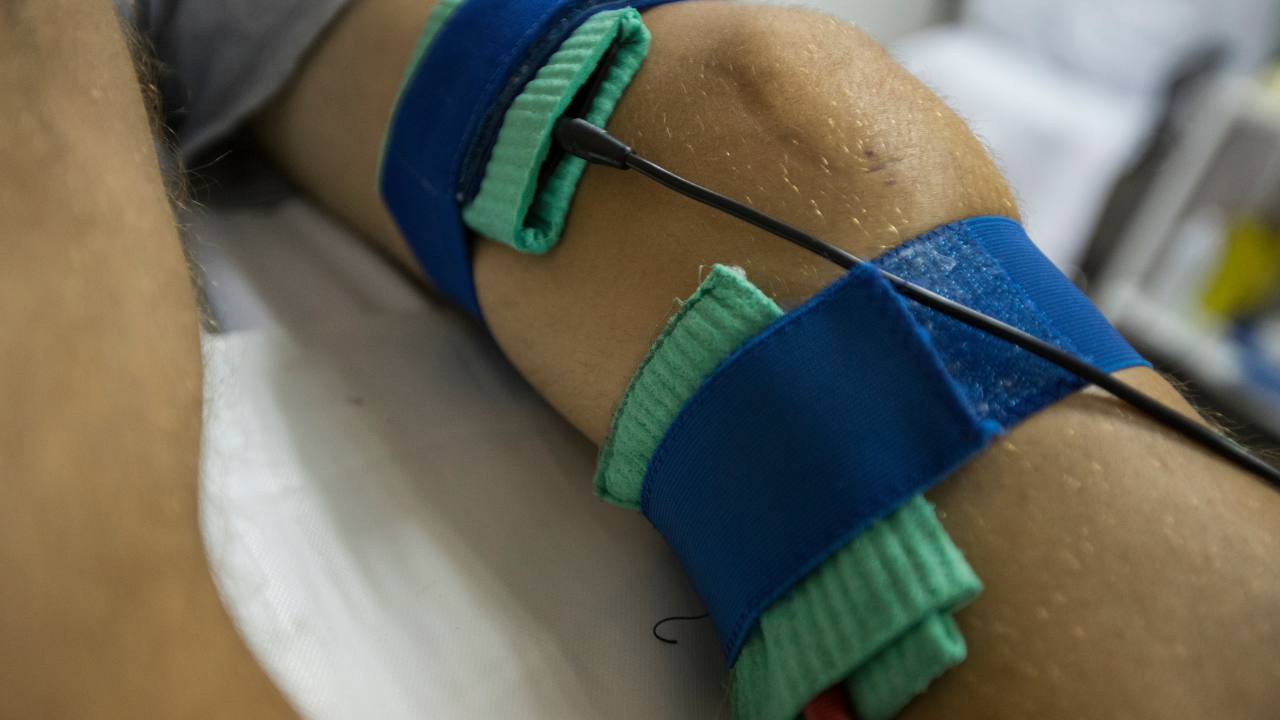
When your knee starts acting up, it can feel like your world is suddenly smaller. Simple activities like walking, climbing stairs, or even getting out of a chair might become painful challenges. If you’re facing knee pain, stiffness, or injury, you’re probably wondering: should I consider physical therapy, or is surgery the better route? This decision isn’t always straightforward, and it deserves a thoughtful, personalized approach.
Let’s explore both options, understand their benefits and limitations, and help you figure out which treatment path might be the best fit for your unique situation.
Understanding Knee Pain and Its Impact
Knee problems come in many forms—arthritis, ligament tears, meniscus injuries, or just wear and tear from years of daily life. The knee is a complex joint, balancing flexibility and strength, which makes it vulnerable to injury and degeneration. When it hurts, the impact stretches beyond physical discomfort. It affects your mood, your work, your social life, and your sense of independence.
For anyone in this position, the immediate goal is clear: get back to pain-free movement. But the question remains: how?
The Promise of Physical Therapy
Physical therapy often stands as the first line of defense against knee problems. The idea is to harness the body’s own ability to heal and strengthen itself. Unlike surgery, which physically alters the joint, physical therapy focuses on improving muscle strength, joint stability, and overall function through targeted exercises and treatments.
At Thrive Physical Therapy, the approach goes beyond just exercises. Therapists develop personalized plans that consider your lifestyle, goals, and specific knee condition. Whether it’s improving your walking pattern, increasing your range of motion, or reducing inflammation, physical therapy is tailored to your body’s needs.
One of the great advantages of physical therapy is its non-invasive nature. It avoids the risks and recovery time associated with surgery. For many patients, this means less disruption to daily life and a more gradual, controlled return to activity.
The therapy sessions often include hands-on techniques like massage, stretching, and manual manipulation, alongside guided strengthening and mobility exercises. There’s also a strong educational component, where patients learn how to prevent future injuries and manage their symptoms effectively.
When Knee Surgery Enters the Picture
Surgery is understandably daunting for many people. The thought of going under the knife raises concerns about pain, recovery time, and the possibility of complications. However, for some knee conditions, surgery might be the most effective solution.
Surgical options vary widely—from arthroscopic procedures that clean out damaged tissue to more complex operations like ligament reconstruction or even total knee replacement. These interventions aim to correct structural damage that physical therapy alone can’t fix.
When knee pain is caused by significant cartilage loss, severe ligament tears, or advanced arthritis, surgery might be necessary to restore function and reduce pain. Additionally, surgery can provide more immediate results in cases where physical therapy has not sufficiently improved symptoms.
At Thrive Physical Therapy, the goal is always to help patients understand the full spectrum of treatment options. For some, surgery followed by physical therapy is the best course of action, combining the benefits of both approaches.
Weighing the Pros and Cons
Choosing between physical therapy and knee surgery isn’t about picking one over the other blindly. It’s about assessing the pros and cons in light of your personal health, lifestyle, and goals.
Physical therapy offers a less invasive, more natural approach to healing. It helps strengthen muscles that support the knee, improves flexibility, and promotes joint health. Plus, the risk of side effects is minimal, and there’s no recovery from anesthesia or surgical wounds to worry about. However, physical therapy requires commitment, time, and patience—results usually appear gradually, and it might not be enough if the knee damage is severe.
Surgery, on the other hand, can offer quicker relief in certain cases and can address structural issues directly. The trade-off is a more significant initial recovery period, possible pain from the procedure itself, and potential complications such as infection or blood clots. Surgery is a bigger decision—both physically and mentally—and not something to be rushed into without a full understanding.
The Role of Physical Therapy Before and After Surgery
Interestingly, physical therapy is essential regardless of whether you choose surgery. Pre-surgical therapy, often called “prehab,” can prepare your knee and surrounding muscles, making recovery smoother and faster post-operation. It can improve strength, reduce inflammation, and enhance range of motion, so your body is in the best possible condition for surgery.
After surgery, physical therapy is crucial for regaining strength, mobility, and function. Without proper rehab, surgery outcomes can be compromised. This is why comprehensive care often involves both surgery and physical therapy working hand in hand.
Listening to Your Body and Your Doctor
What really matters in this decision is the individual. No two knees—or patients—are exactly alike. Listening to your body’s signals, understanding the severity of your condition, and having open, honest conversations with your healthcare team are vital.
Sometimes, what starts as manageable pain can worsen over time. Other times, an early surgical intervention might prevent more serious damage down the line. This is why early assessment by a professional, such as a physical therapist at Thrive, is so valuable. They can evaluate your knee, discuss your symptoms, and work with you to develop a treatment plan that feels right.
A Fresh Perspective from Thrive Physical Therapy
At Thrive Physical Therapy, the approach is rooted in personalized care and patient empowerment. Rather than seeing treatment as a one-size-fits-all solution, the team dives deep into understanding the cause of your knee issues and crafting a treatment journey that fits your unique story.
They prioritize non-surgical options first, emphasizing education, movement, and healing. But when surgery is necessary, Thrive supports patients through every step, ensuring rehab is effective and that patients regain confidence in their knees.
This patient-first philosophy shines through every interaction. Instead of being overwhelmed by medical jargon or rushing toward surgery, patients are given clear information, compassionate support, and tailored treatment options that honor their goals and lifestyles.
When to Consider Physical Therapy as Your First Step
If your knee pain is mild to moderate, or if you’ve had an injury that isn’t severe, physical therapy might be all you need. It’s especially effective for improving knee function after sprains, strains, or partial ligament injuries. Physical therapy can also be a powerful tool to manage symptoms of early arthritis, helping reduce pain and stiffness and improving quality of life.
Because physical therapy focuses on strengthening the muscles around the knee—like the quadriceps and hamstrings—it provides better joint support, which can slow degeneration and reduce the risk of further injury.

When Surgery Might Be the Better Choice
Surgery tends to be recommended when structural damage is severe, or when physical therapy and other conservative treatments have not relieved symptoms adequately. If you have a torn ligament that leaves your knee unstable, a meniscus tear that doesn’t heal, or end-stage arthritis that severely limits your movement, surgery could provide the relief you need.
It’s also worth noting that some patients prefer surgery because they want a faster resolution and are willing to undergo the recovery process. Each path has trade-offs, and knowing your priorities is key.
The Healing Journey: Beyond the Decision
Whichever treatment you choose, recovery and healing are ongoing journeys. Knee health depends on your continued commitment to care. That means following through with rehab exercises, maintaining a healthy weight, avoiding high-impact activities when necessary, and listening to your body’s limits.
One of the most empowering aspects of physical therapy is how it teaches you to take control. You learn exercises and habits that keep your knee healthy long-term, minimizing future problems.
For those who have surgery, physical therapy after the operation is a cornerstone for restoring function. Without it, the best surgical outcome can’t be guaranteed.
Suggested Reading: Knee Pain Therapy: How Physical Therapy Can Improve Mobility
Final Thoughts
The decision between physical therapy and knee surgery doesn’t have to be a leap into the unknown. It’s about understanding your body, exploring your options, and choosing the path that fits your life best. Physical therapy offers a gentle, effective approach for many patients, emphasizing natural healing and strength. Surgery, while more invasive, can be a powerful solution for serious knee damage and can sometimes offer quicker relief.
Most importantly, these approaches aren’t mutually exclusive. Many patients find the best outcomes come from combining both: using physical therapy before and after surgery to maximize results.
If knee pain is holding you back, don’t wait to explore physical therapy. Visit https://thriveptclinic.com/ to learn how their team can help you move with confidence again. Your knees—and your future self—will thank you.
If your knee pain is interfering with your daily life, don’t wait to get professional advice. Early intervention can make all the difference.

